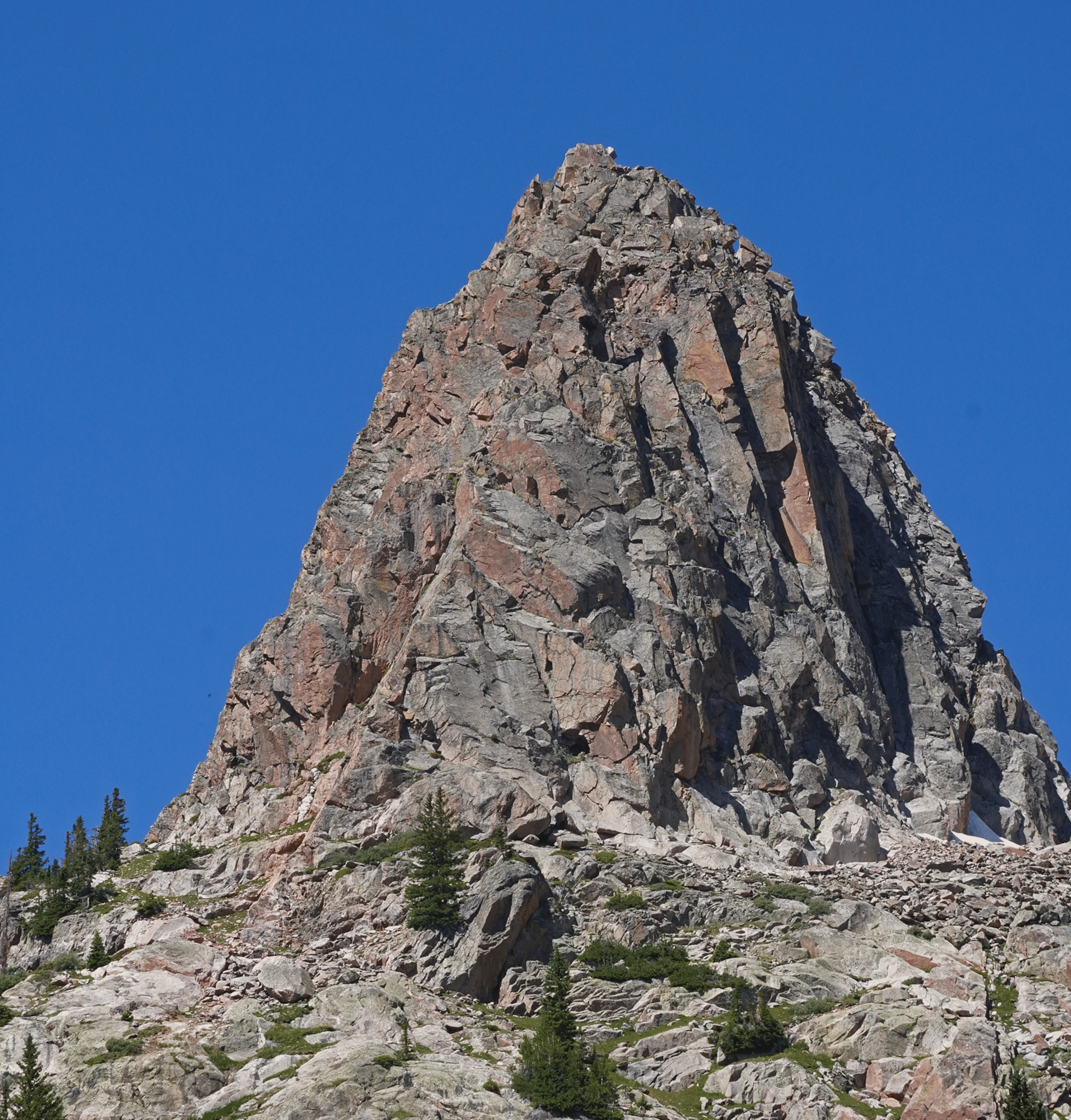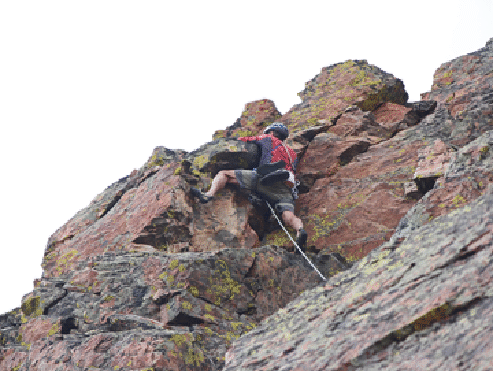 Freya Tower (East, 5.8)
Freya Tower (East, 5.8)
 Freya Tower (East, 5.8)
Freya Tower (East, 5.8)
On Aug. 4, 2017, Bill Briggs (68), Jim Illg (55), and I (66) climbed this route, first done by Ryan Marsters, Mike Santoro, and Brandon Chalk in Sept. 2016. We approached by taking the Gore Range Trail for a short distance south from the North Rock Creek bridge and then, at a sharp switchback left, heading right and up through the woods to gain the low end of the long east ridge (Aasgard Ridge) of Valhalla; climb that ridge to the splendid high Aasgard Meadows and then drop into the basin just north of Freya. We found the proper approach gully which allows for entrance into a prominent right-facing dihedral from the right. A large loose block made the traverse into the dihedral tricky. The first hard move is under a 9-inch overlap, which must be passed on the right (5.8; the first ascent party avoided this by using the face to stay on the right side for most of the pitch; Jim Illg did the same). Then back into the dihedral and up to a wall with a crack in it that allowed passage to the first belay; again a 5.8 move here. I call this the “Overlap Pitch”.
Pitch 2 starts with a steep move up a ramp to get around a blind corner (5.7); then the angle eases and it is easy to the next belay. This is the “Corner Pitch”.
For pitches 3 and 4 we took routes a little different than those of the first ascenders. For pitch 3 we descended easily for about 6 feet to the north, then climbed an easy broad gully to the base of a steep face. The first ascenders went to the south side, finding a chimney route. The face itself was 5.8, to a 5.7 pullup to gain the top of the tower. This is the “Tower Pitch”.
Then some scrambling to the base of a 5.6 face pitch (led by Jim; other 3 by Bill) which leads to class 3 and 4 stuff the rest of the way. This face has a large horn on the left, so I call it the “Horn Pitch”. The first ascenders did this to the right of our way (5.8).
From the top there is class 3 scrambling to the summit, and then a long ridge traverse on beautiful but often very exposed rock. Much of this is class 4. All of this section was interesting and beautiful. We eventually reached the gully that I led in 2010 and set up a rappel which got us a long way down to easy ground.
Gear: We left our packs near the end of the descent rappel and did the climb carrying our approach shoes and a very small pack with water. We used one 57-meter rope for leading and another 50-meter rope for the third man.
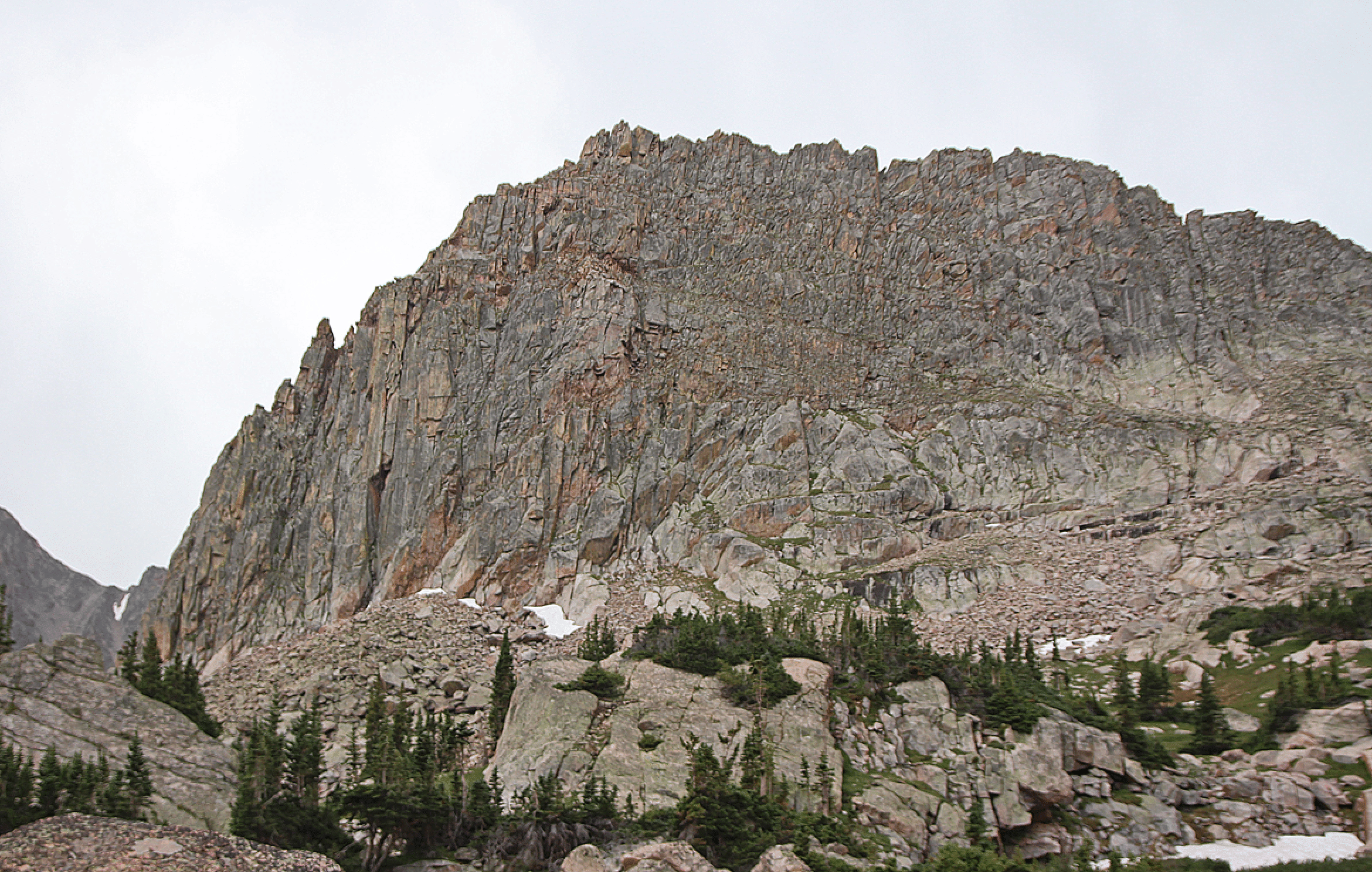
Freya Tower: The east ridge route follows roughly the left skyline. The horizontal section at the top is a true ripsaw ridge.
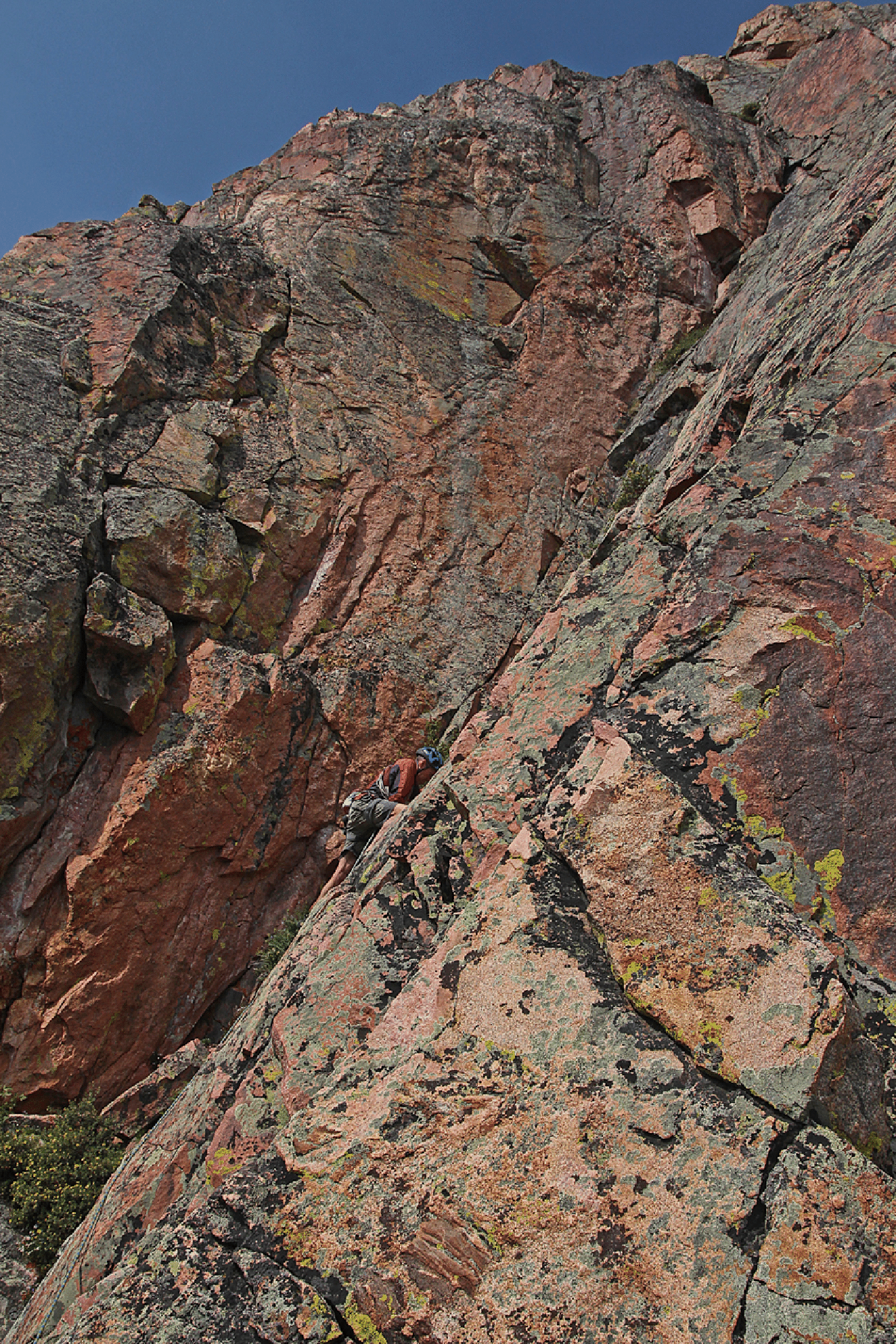
We started by traversing from the photographer’s location into the dihedral. Seconder Jim actually avoided the dihedral and climbed straight up to the right side of the 9-inch overlap. Passing that overlap was the first difficulty. The rock was generally beautiful though one had to watch for large loose blocks.
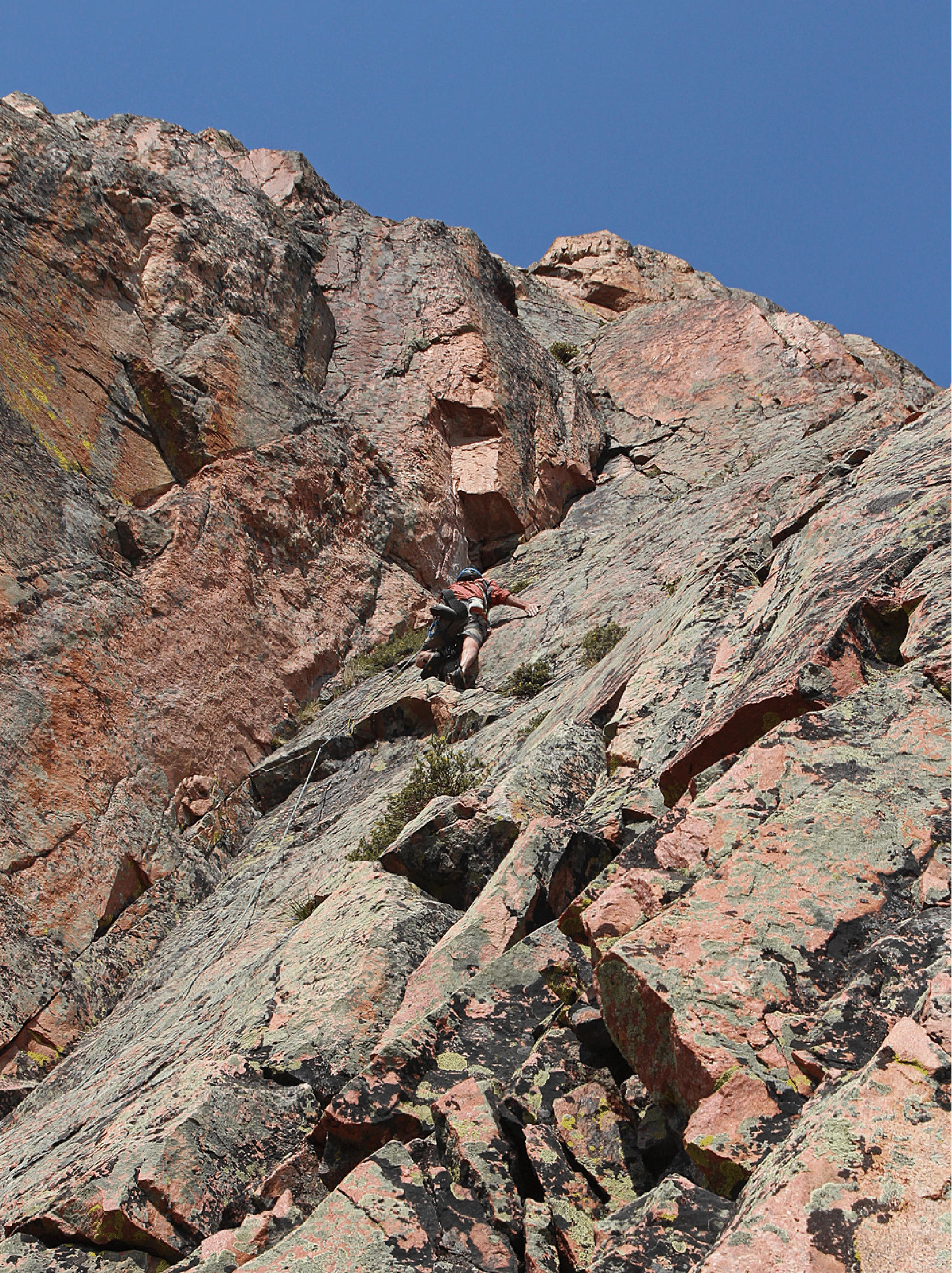
Here Bill is just above the overlap on Pitch #1 (I found the rightward traverse from the dihedral to under and right of the overlap difficult). The rock climbing was, for me, a little more difficult than the pictures make it seem. Above Bill and to the right is a curving fracture that allowed passage to the belay at the bush. Pitch #2 then goes around the corner to the right from that belay position.

The second pitch starts with a 5.8 move to pass the small overlap and then proceeds around the blind corner to some easier ground to the second belay. Bill leading.
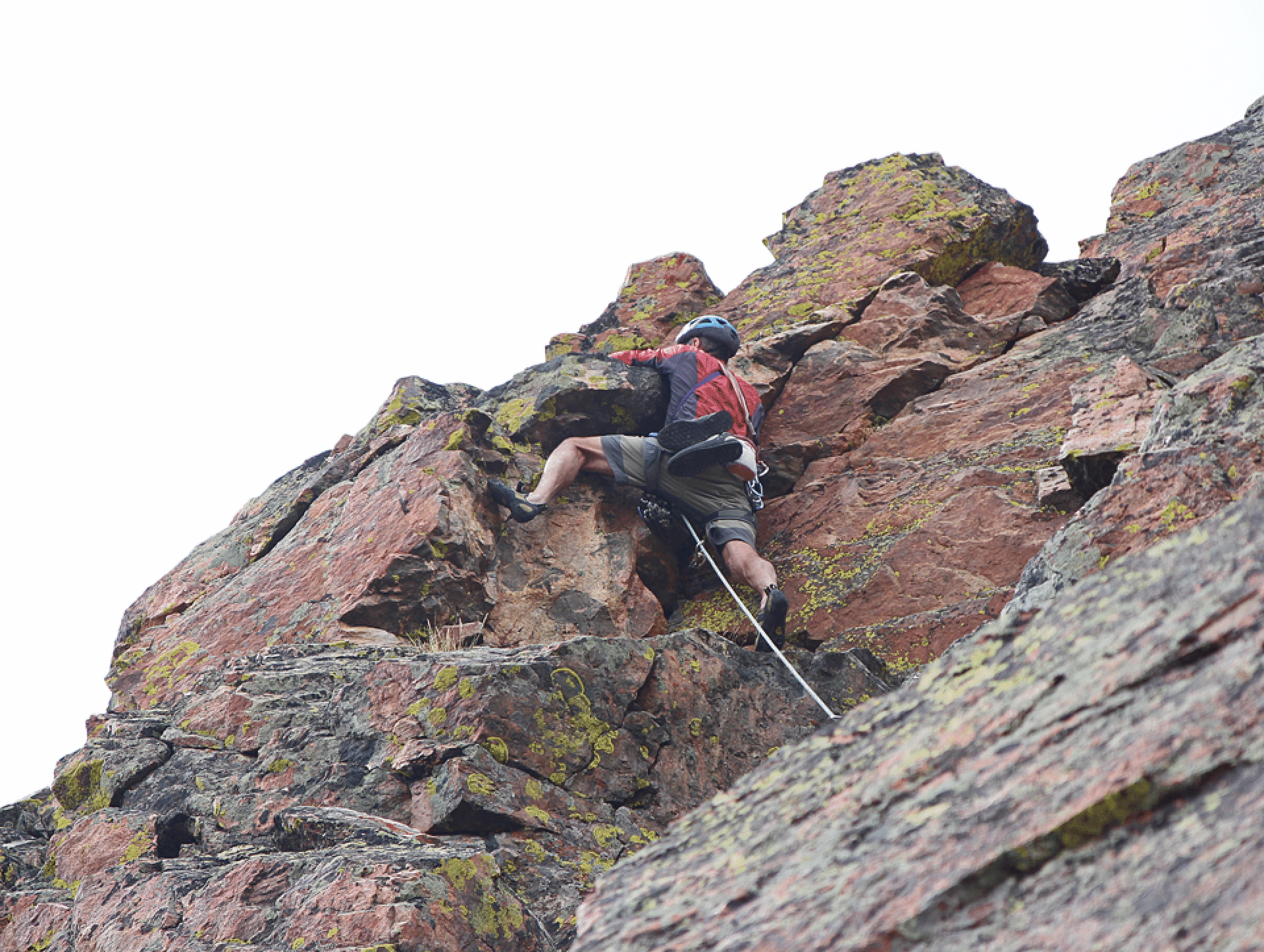
Bill on the last obstacle before the top of the tower on the Tower Pitch (#3). Both Bill and I have had knee replacements, but we are still able to climb at an acceptable level.
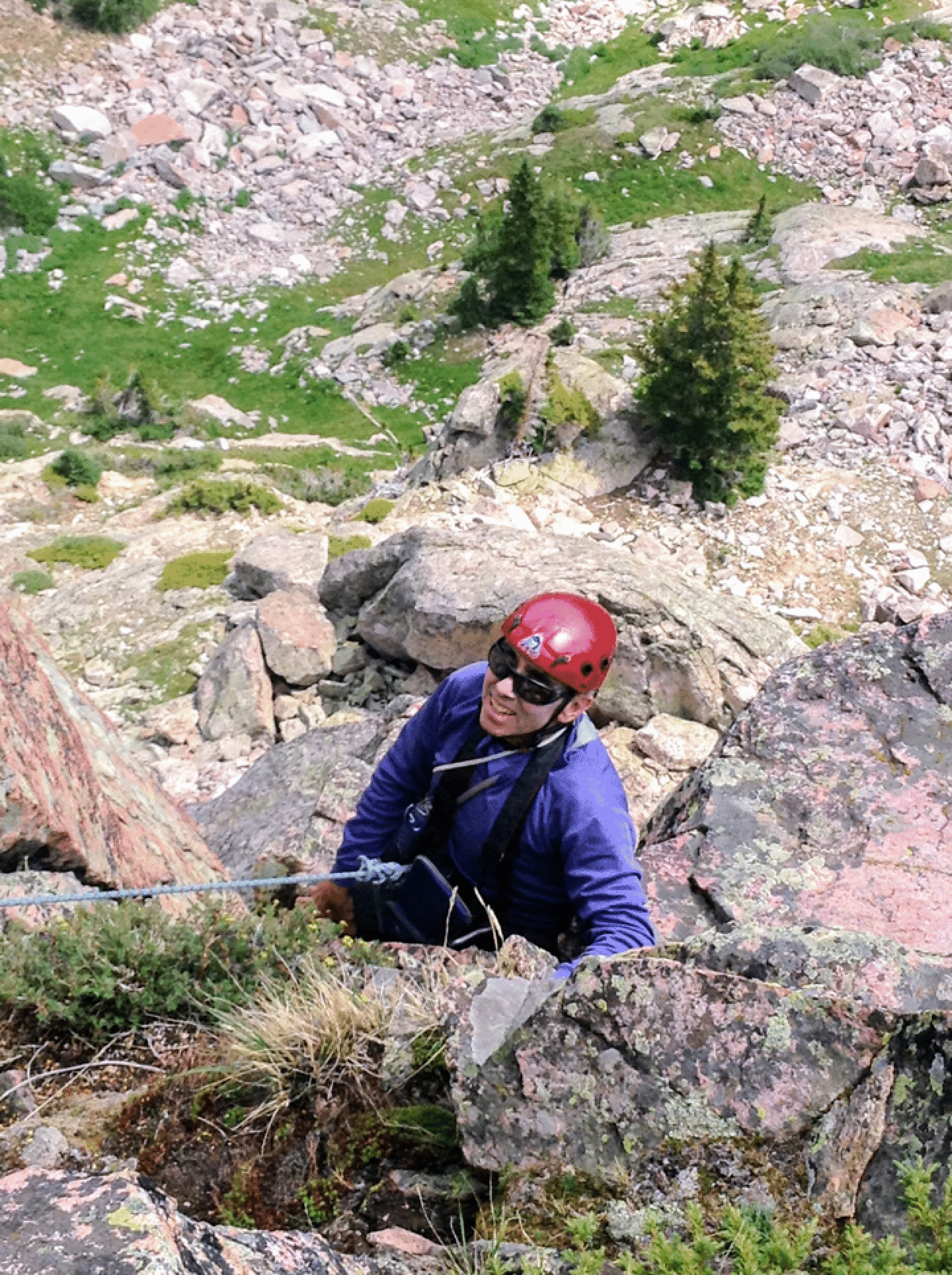
Stan finishing pitch 4; photo by Jim Illg.
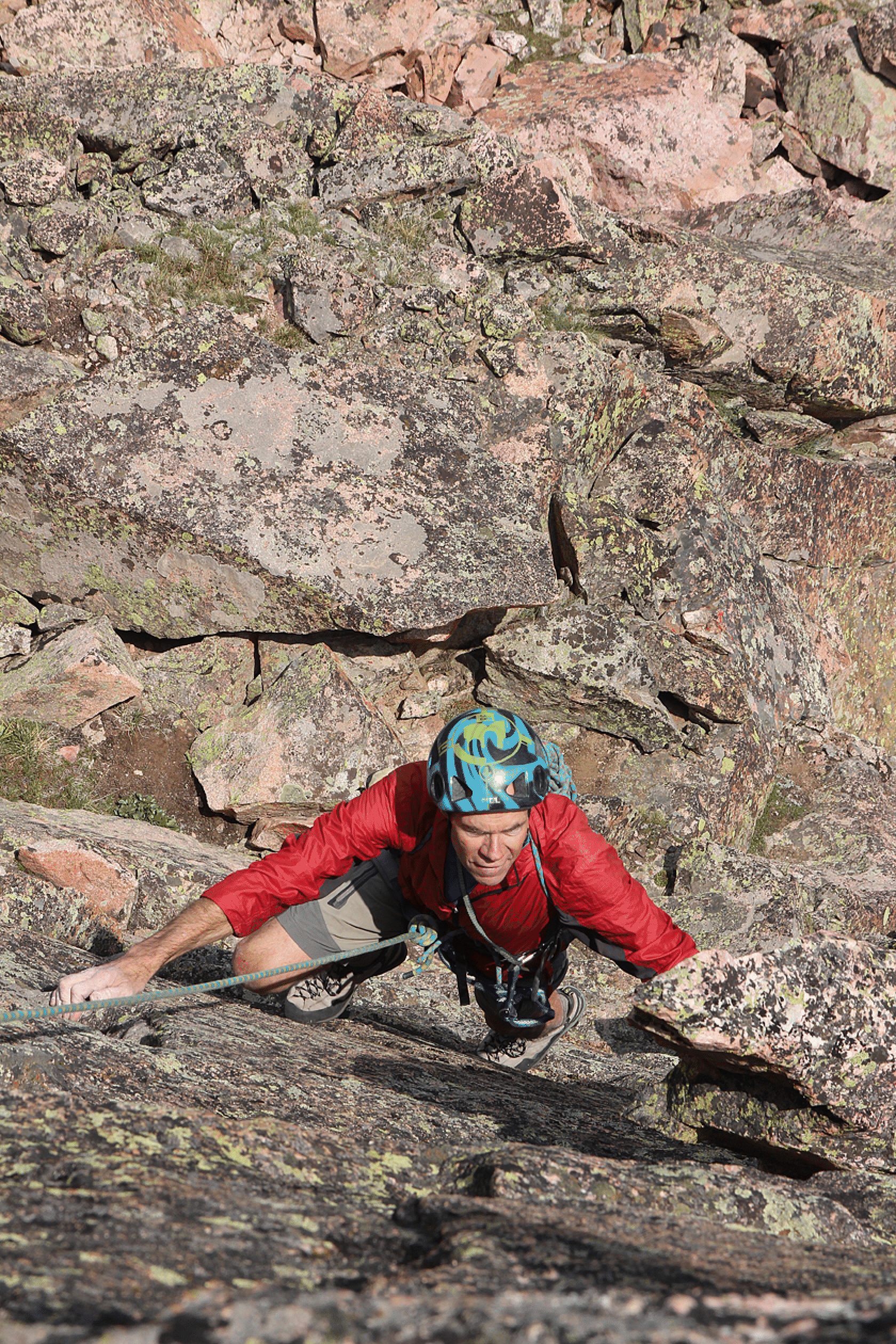
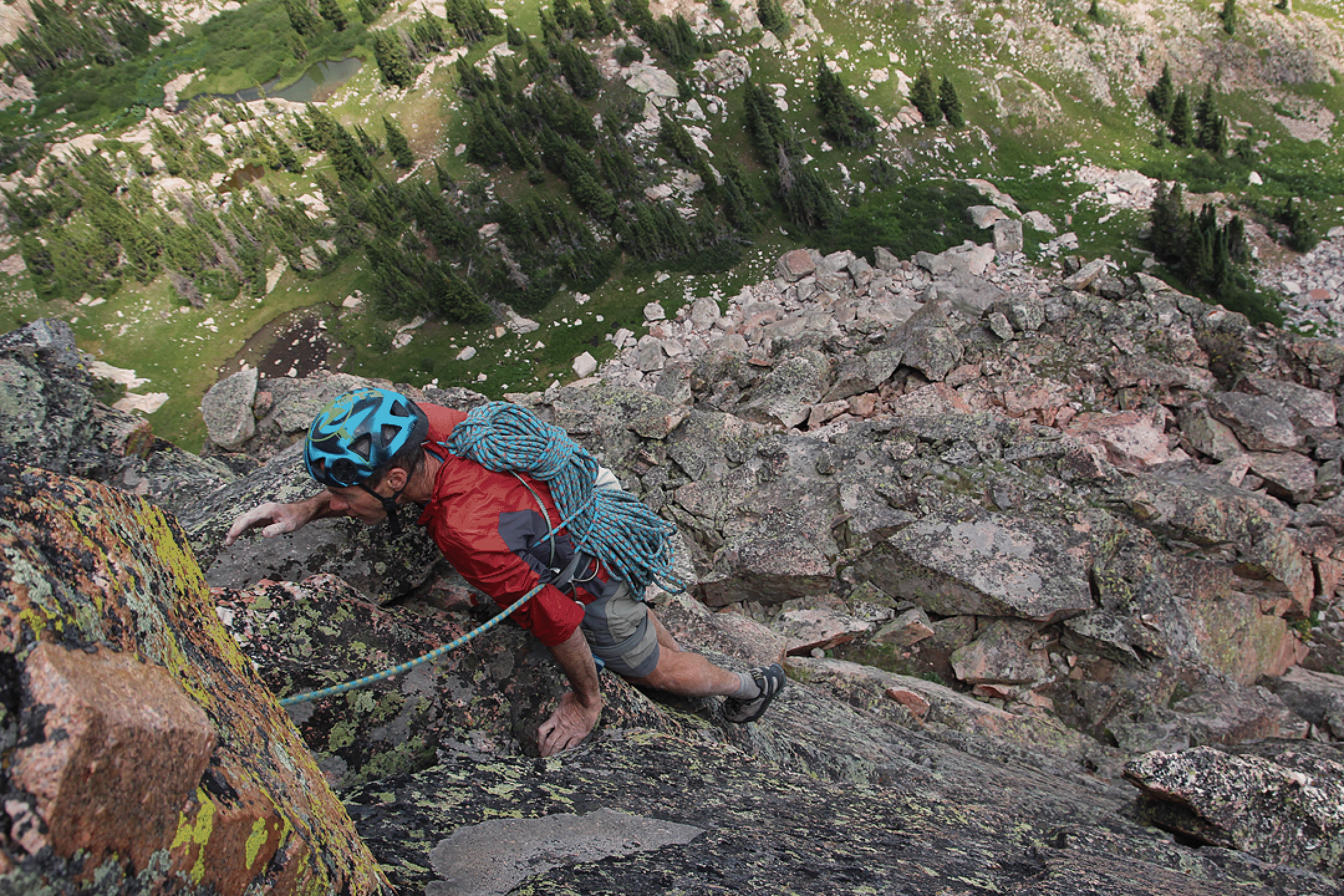
The two images above show Bill finishing pitch 4, which I call the Horn Pitch because of the large horn near Bill’s left hand in the first image. Jim led this one.
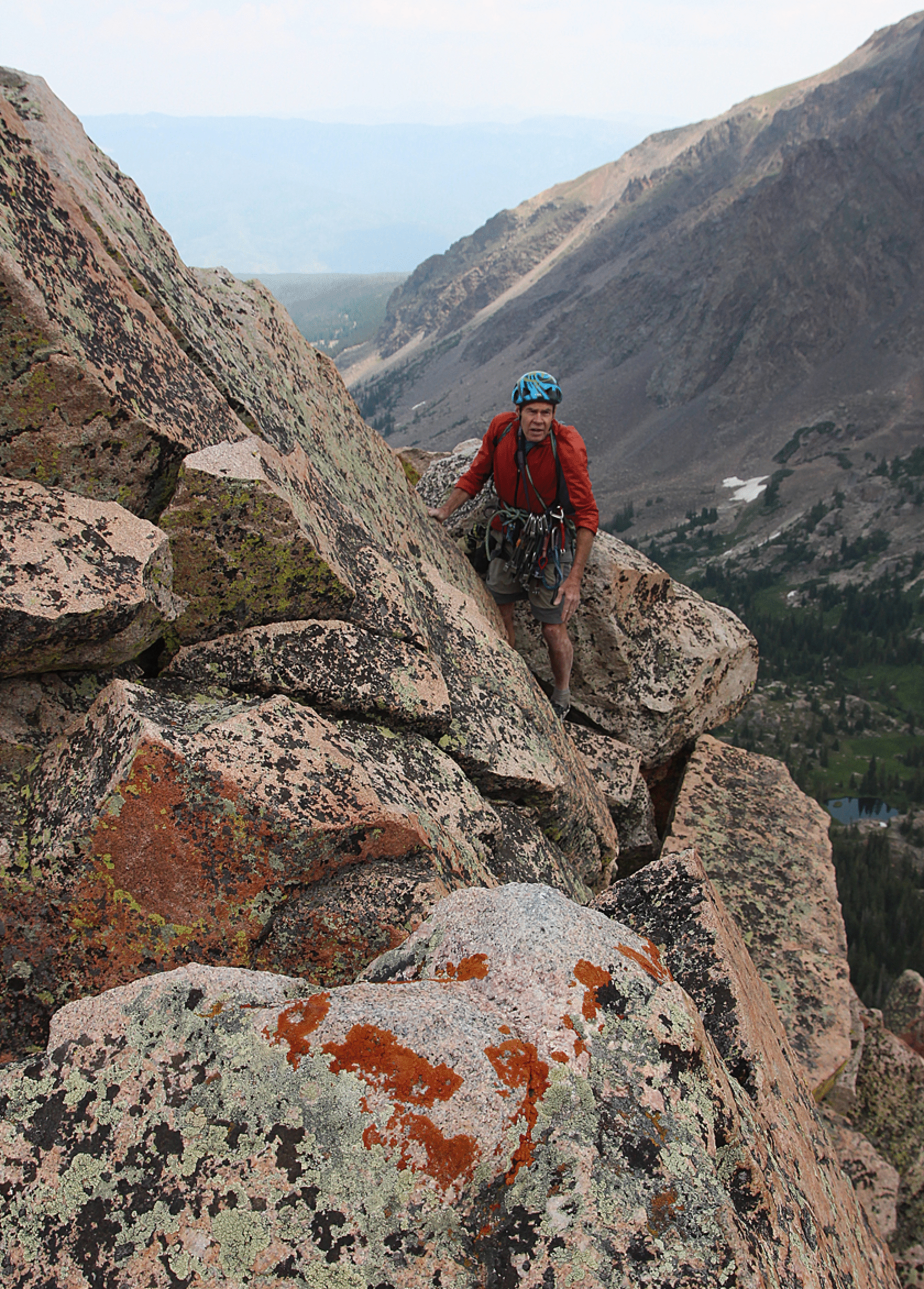
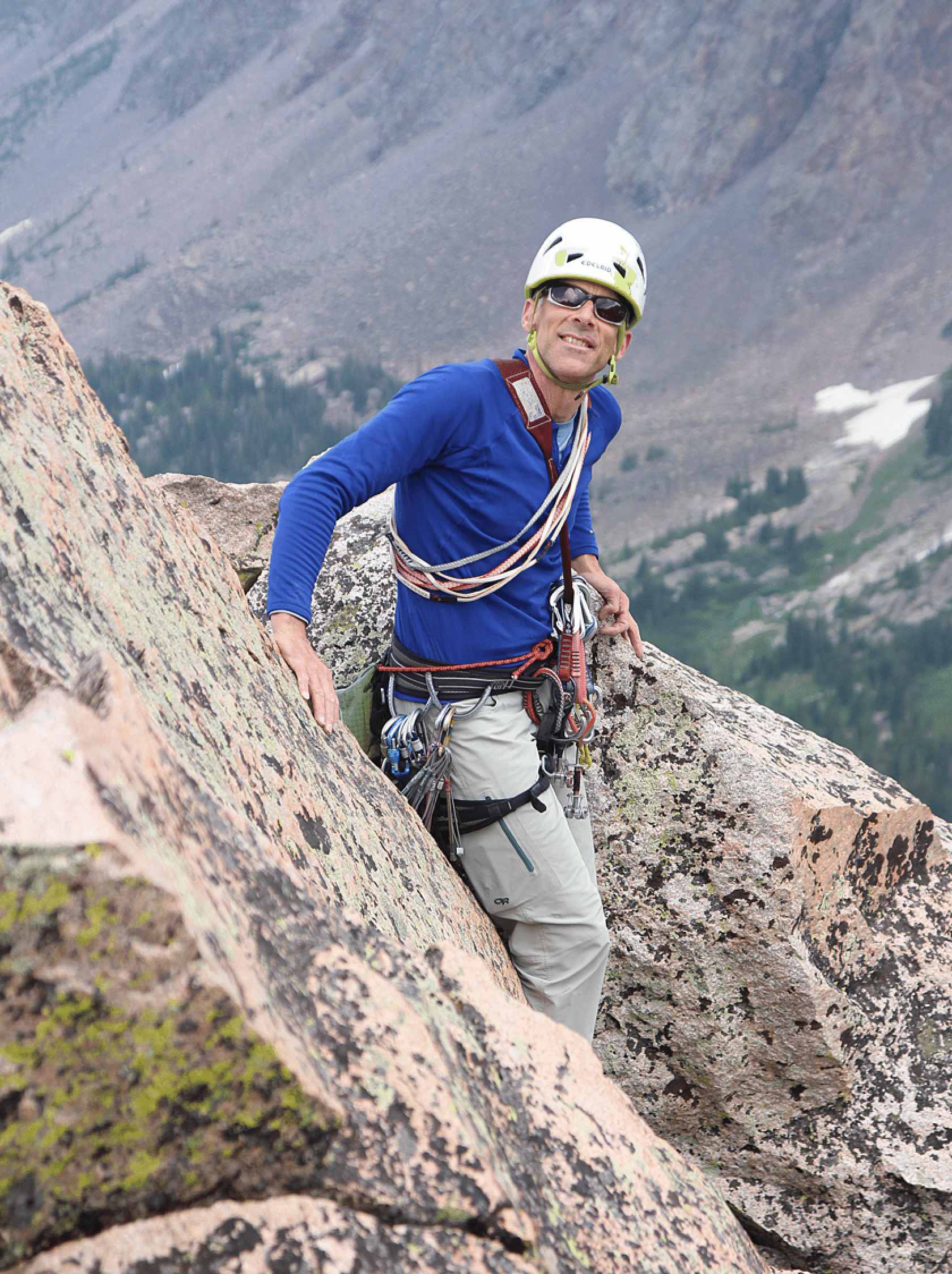
After the roped climbing we had a very long section along the top of the ridge, which had spectacular rock and adequate holds, though it was terrifically exposed in spots. Bill in first image; Jim in second.
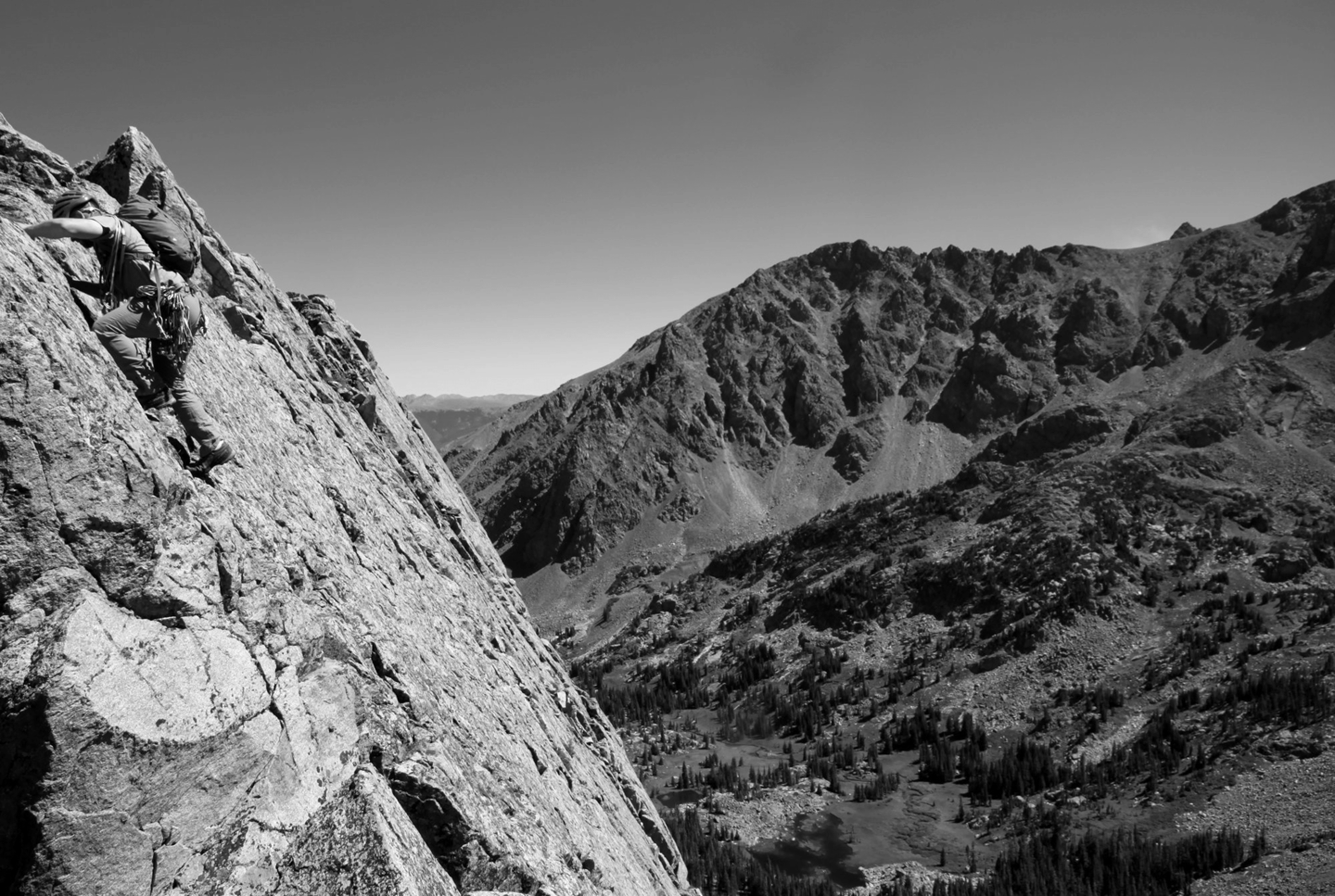
This photo by Brandon Chalk nicely captures the exposed moves along the ridgeline.
This shot was taken on a hike on July 3, 2018. The route goes up the steep slab seen in profile at left, with the top of the prominent red face at its top marking the end of the first pitch.
